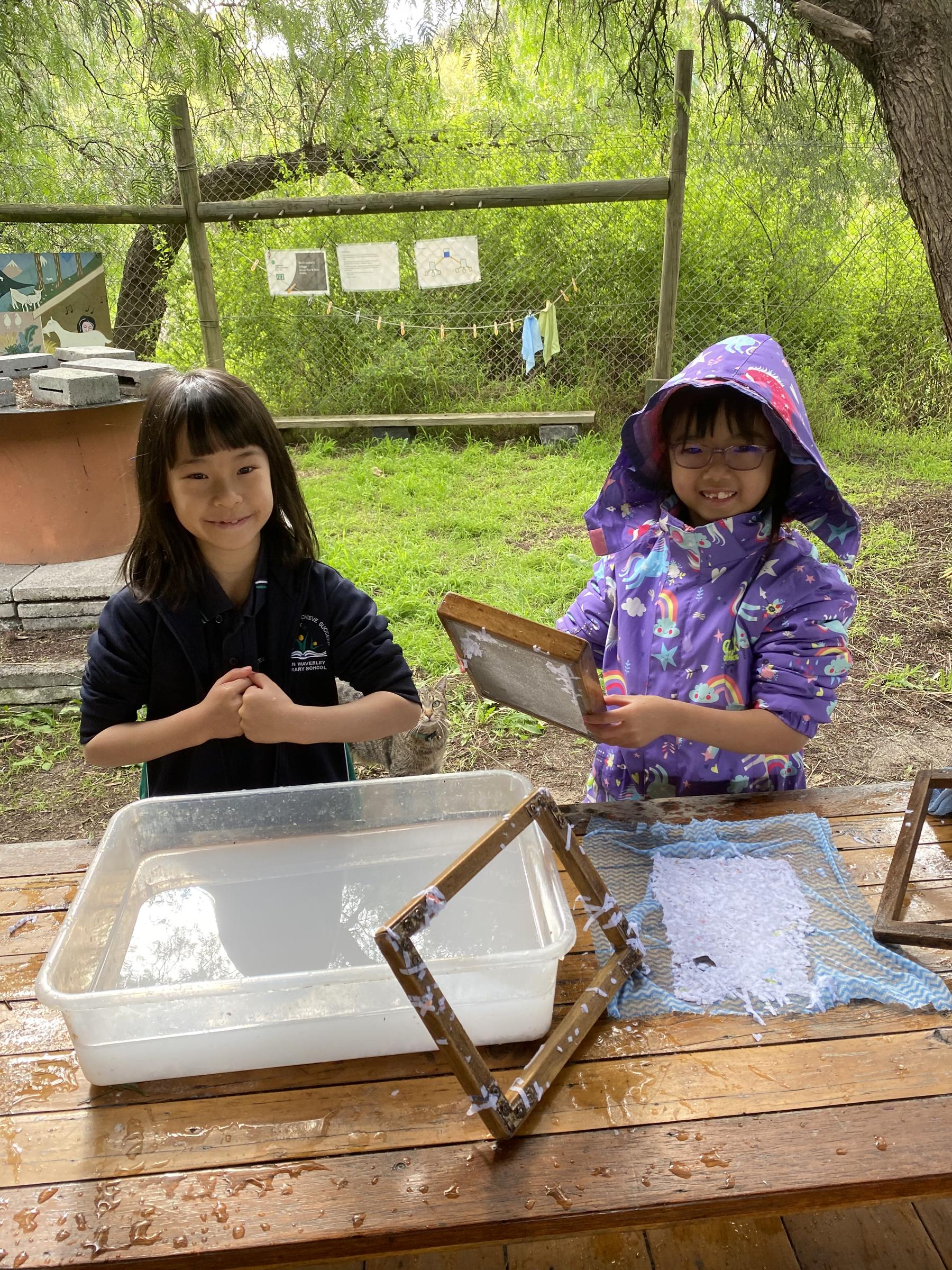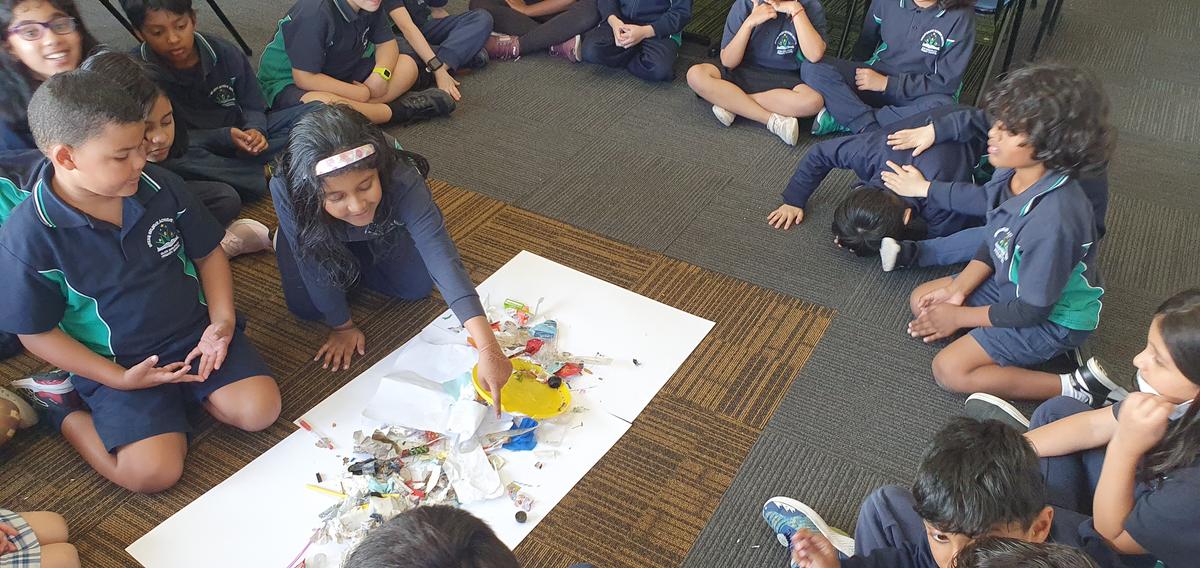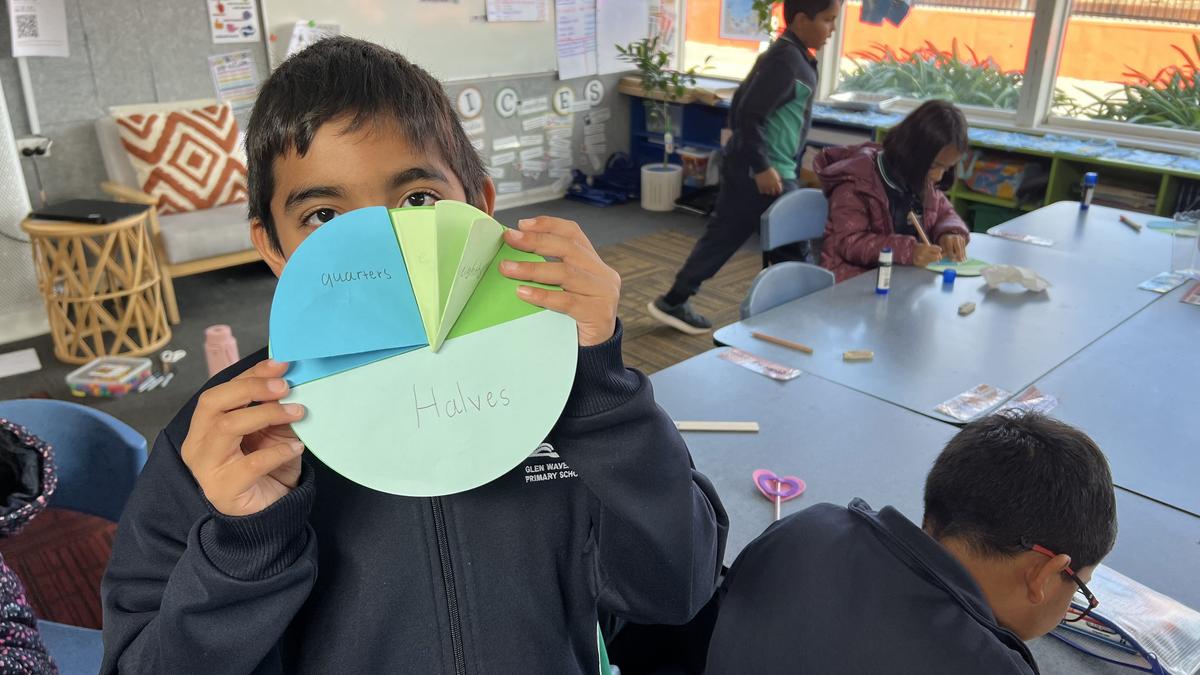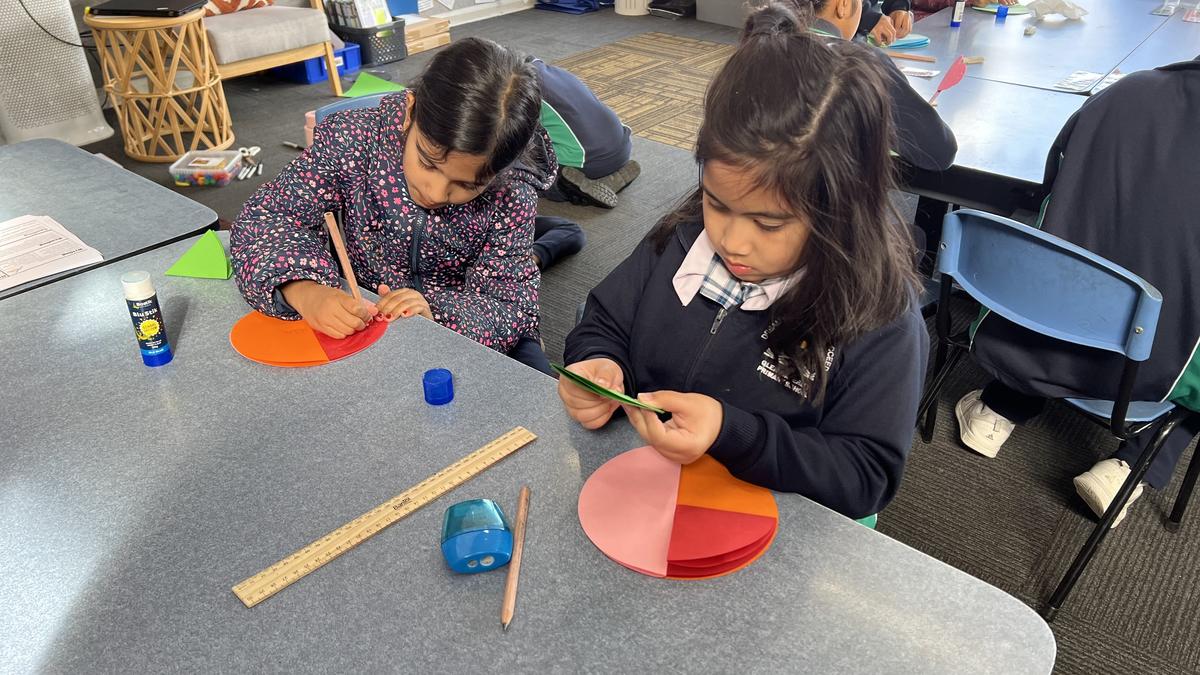LEVEL TWO, TERM TWO

Dear Parents and Guardians,
Welcome to another exciting term of learning and celebration in Level Two.
During Term Two, Level Two learners will engage in explicit learning experiences around Non-Fiction texts, Persuasive Writing and Procedures. Through these topics, learners will continue to improve their knowledge and understanding in the areas of Reading, Writing, and Speaking and Listening. In Mathematics, learners will engage in hands on learning experiences to explore fractions, multiplication, division and location.
Learners participated in an excursion to CERES to explore the 6Rs of sustainability; rethink, reuse, recycle, reduce, refuse and repair. Learners will also be exposed to additional activities connected to our Inquiry question ‘How can resources be used sustainably?’.
In other news, Kimielle D’Mello was recently married. As a result, her name is now Kimielle Vecchio. Should you need to contact her, her new email address is kimielle.vecchio@education.vic.edu.au.
Please take a few a moment to read what we have planned for this term.
Kind regards,
Michelle Caruso, Kimielle Vecchio, Lauren Anderson, Lin Liu and Emma Williams
Term 2 Key Dates
- April 24 – Curriculum Day (Student Free Day)
- April 25 – ANZAC Day Public Holiday
- April 26 – First day of Term 2
- May 2 – Year 2 Excursion to CERES
- May 10 to 12 – Mother's Day Stall
- June 6 – Student Led Conferences
- June 12 – King's Birthday Public Holiday
- June 13 – Student Led Conferences
- June 20 – Student Led Conferences
- June 23 – Reports available on Compass
- June 23 – Final Day of Term 2 (early finish at 2:30pm)
Inquiry
In Term Two, students will explore the concepts behind the inquiry question, “How can resources be used sustainably?” through the STEAM inquiry process. Students will identify a problem through the collection of data within the school community that demonstrates an unsustainable use of resources. They will explore the 6Rs with everyday materials to demonstrate how waste can be reduced, reused, refused, repurposed, repaired or recycled during the CERES excursion. Through Media Arts skills, students will develop a campaign to change practices within the school to be a more sustainable community.
To support your child’s learning at home, you could:
- Discuss with your child what sustainable practices on resources look like at home.
- Analyse what is waste in your household.
- Adopt the 6Rs at home to improve sustainable practices and to connect school learning with home.
Key learning vocabulary:
Rethink, refuse, reduce, reuse, recycle, repair, rot, sustainability, environment.
YCDI
This term in our Wellbeing program the learners will explore the learning pit in more detail. Learners will think about the different emotions they feel during their learning. Learners will be taught that feelings or discomfort and frustration are normal in learning, and that signifies that they are taking on a challenge. Learners will also explore respect. They will delve into what respectful actions look like to others and how what we think is respectful might be different to what others think. This learning will help build empathy within the students and to think about how their actions might affect the behaviour of their peers.
To support your child’s learning at home, you could:
- Discuss how you are feeling and explain to your child what made you upset or uncomfortable
- Regularly ask your child to articulate how they are feeling at the end of the day and why
- When required, explain to your child how their actions made you feel. Ask them what they could try differently.
Key learning vocabulary:
Learning pit, emotions, Zones of Regulation, respect, behaviour, discomfort, frustration.
Reading and Viewing
This term in Reading, we will be focusing on reading Non-Fiction books with Accuracy and Fluency. Non-fiction books are particularly useful for Expanding Vocabulary and language skills because they often introduce new words with images that support their meaning and include features like a glossary to give students a clear definition of new words. Through learning how to read and comprehend Non-Fiction books, we aim to spark the students' curiosity and get them interested in the world around them. We will focus on learning how to use key features of a Non-Fiction text to find and understand facts and how to summarise what they’ve learnt. As well as, teaching the students how to generate questions of their own to investigate further.
To support your child’s learning at home, you could:
- Talk to your child about their current interests and find out the real-life topics they are curious about.
- Explore Non-fiction books about the natural world that your child will encounter. Focus on things of interest in your child’s life. Some topics to explore are machines or the weather, animals, plants, and insects. Non-fiction books should lead with photos and illustrations and not be text heavy.
- Encourage the use of books and not a search engine to answer questions about the world.
- Go over the many different features nonfiction books use to engage readers, such as headings, fact boxes, a table of contents, glossaries, and an index.
When helping your child at home, if they become stuck on a word, pause and encourage them to look for clues within and around the word. You could use prompts such as:
- Read on and collect other clues.
- Go back to the beginning of the sentence and re-read what you read.
- Look at the illustration and see if there are clues there.
- What do you think would make sense here?
- What is the first and last sound?
- Does that word look right, sound right?
Key learning vocabulary:
Non-Fiction, table of contents, index, glossary, headings, bold words, pictures and their captions, and labelled diagrams.
Speaking and Listening
This term Level 2 will engage in conversation and debate to persuade others that their opinion is correct. This will be to tie in with our Literacy topic of persuasion. Learners will provide explanation and reason for their opinion and will explore the use of persuasive devices in conversation.
In Mathematics, learners will be encouraged to similarly reason their answer to explain how they arrived at that conclusion and how they know they are correct. This will ensure learners are using appropriate mathematical language to explain the concepts.
Finally, learners are being asked for Student Voice to support our You Can Do It (YCDI) program. Through a Wellbeing Wall in each classroom, learners are able to share their thoughts of how the Level 2 learners can improve in the five aspects of the YCDI program; confidence, organisation, getting along, persistence, resilience, and the four school values; integrity, initiative, respect and global empathy. They will also be encouraged to voice how they feel during the productive struggle of learning, acknowledging the difficulty they may face with the learning task and implementing strategies to help with frustration.
To support your child’s learning at home, you could:
- Discuss the emotions felt when learning can be challenging. Explore strategies to continue persisting on difficult tasks.
- Ask learners to explain their thinking when completing Mathematics Home Learning.
- Engage in conversation about topics and practise debating both points of view.
Writing
This term, our focus is persuasive writing as a form of non-fiction texts. Students will learn the difference between fact and opinion and how to give reasons for a statement. They will explore the use of persuasive devices, such as emotive words and phrases, text connectives, and specialised vocabulary.
Students will be engaging in Lightning Writing sessions where they will respond to ethical dilemmas, for example, is it okay to have a bigger slice of cake than everyone else. They will also choose a matter they believe in and write a persuasive piece about it, using technical language and persuasive devices.
Throughout the term, students will have the opportunity to revise and edit their work, ensuring correct spelling, sentence-boundary punctuation, and text structure. They will also learn to use modality in the verb group of obligation or ‘‘must’’ to persuade the reader to commit to or do something.
We are excited to see our Grade 2 students develop their persuasive writing skills and we look forward to sharing their published pieces with you.
To support your child’s learning at home, you could:
- Discuss current issues: Encourage your child to talk about current issues or events that they feel strongly about. Ask them why they feel that way and encourage them to develop their own opinions and arguments.
- Brainstorm ideas: Help your child come up with ideas for their persuasive writing. This could include brainstorming sessions where you write down different ideas and arguments, or simply discussing potential topics.
- Provide examples: Share examples of persuasive writing with your child. This could be anything from newspaper articles to political speeches. Encourage your child to analyze the techniques used in these pieces and how they could use them in their own writing.
- Practice debating: Encourage your child to practice debating with you or other family members. This will help them develop their argumentative skills and learn how to respond to counterarguments.
- Read and review drafts: Read and review your child's writing drafts, offering feedback and suggestions for improvement. Encourage them to revise and edit their work, helping them to develop their writing skills over time.
- Celebrate success: Celebrate your child's successes, no matter how small they may seem. Encourage them to keep writing and to keep developing their persuasive skills.
Key learning vocabulary:
Persuasion, statement, fact, opinion, non-fiction, fiction, structure.
Spelling
This Term, our focus in spelling will be on exploring the concept of plural forms, recognising known prefixes and suffixes to read unknown words, and investigating the way words change when suffixes are added. Here is a breakdown of the learning contents for this term:
- Plural forms: We will be exploring the different ways to form plural nouns using 's', 'es', and spelling changes.
- Prefixes and suffixes: Students will be learning how to recognise known prefixes and suffixes to read unknown words. We will be investigating the way words change when suffixes are added (-ing, -ed, -er, -est, -ful, -ly), and if the verbs end in y, how to change the 'y' to an 'i' and add 'ed' (e.g. worry → worried).
- Words investigations: Students will be learning the base word meaning, suffixes, and etymology of words.
- Sound-letter: We will be using accuracy strategies in reading to transfer phonics, applying beginning, middle, and end sounds, and teaching R-Controlled Vowels: ar, er, ir, or, ur. Students will also be identifying all Standard Australian English phonemes, including short and long vowels, separate sounds in clusters.
- Consonant digraphs: Students will be able to write words containing consonant digraphs (such as 'sh', 'ch', 'th', 'ph', 'wh', 'ck', 'ng', 'qu') and vowel digraphs and long vowels (such as a-e, ai, au, ay, e-e, ee, ea, i-e, ie, oa, oe, o-e, oi, oo, ou, ow, oy, u-e, ue, y). They will also be able to write words with 2 letter and 3 letter consonant blends (scr-, shr-, spl-, spr-, str-).
- Silent letters: Students will recognise and read words with silent letters (e.g. knife, castle, write). We will be covering initial, medial, and final silent letters using a traditional tale to teach phonic elements.
To support your child’s learning at home, you could:
- Encourage your child to practice writing regularly. The more they write, the more they will become familiar with the different spelling patterns and rules they are learning.
- Help your child identify and learn common prefixes and suffixes. This will enable them to recognise and spell words more accurately.
- Play word games that incorporate spelling and phonics, such as Scrabble, Boggle or Hangman. This can make spelling practice fun and engaging.
- Read aloud with your child regularly and ask them to spell unfamiliar words they encounter. This will help them develop their phonics skills and reinforce spelling patterns.
Key learning vocabulary:
Plural, singular, prefix, suffix, etymology, spelling inquiry.
Mathematics
This term our focus for Mathematics is fractions, and length and area. Towards the end of the term learners will be reviewing their place value, and data and graphing skills from Term 1.
Students will engage in a variety of hands-on tasks that encompass a real-world perspective that will allow them to transfer their skills into their daily lives.
Throughout the term, learners will be asked to demonstrate their understanding. Students will use concrete materials such as counters to show how they can divide a collection into different fractions as well as comparing fractions with others to find equivalence. During the length and area focus, students will gain a practical understanding of how to measure and the various ways that we can measure using informal and formal units, such as unifix and rulers.
To support your child’s learning at home, you could:
- Ensure the Home Learning tasks are completed to a high standard.
- Practice measuring items around your home using informal units. For example, how many spoons make up the length of a coffee table (ensuring the spoons are placed end to end).
- Practice measuring items around your home using a formal unit of measure, such as a tape measure.
- When measuring, record your findings on Seesaw or on paper.
- Comparing the lengths of items around your home.
- Generate your own area problems to solve. For example, working out the area of a room in your house, driveway, books etc.
- Utilising Mathletics for further practice.
Key Learning Vocabulary:
Fraction, part, whole, half, quarter, third, fifth, section, collection, length, measure, area, small, tall, long, short, ruler, smallest, longest, tallest, shortest, about the same as, more than 1 meter, less than 1 meter, perimeter, unit, centimeter, meter, millimeter.





